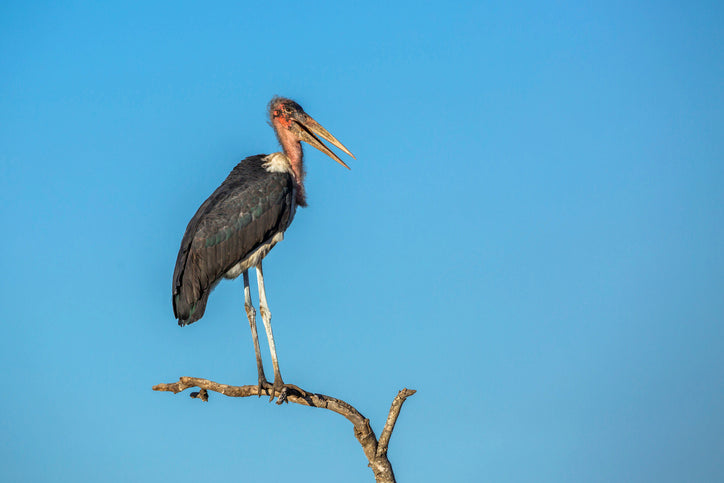
Marabou Stork
Share
The Intriguing Marabou Storks of Kruger National Park 🐦
Venture through the diverse landscapes of Kruger National Park, and you might spot the unmistakable figure of the Marabou Stork. With its bald head, long legs, and massive wingspan, this bird might not win any beauty contests, but it plays a crucial role in the ecosystem as nature's cleanup crew.
Unusual Appearance: The Marabou Stork is often noted for its somewhat ungainly appearance. It has a large, white body, spindly legs, and a nearly bald head and neck. The pouch hanging from its neck is not only distinctive but also functional, playing a role in thermoregulation. 🌡️🦤
Scavenger Lifestyle: Marabou Storks are primarily scavengers, feeding on carrion, and other animal remains. This makes them vital for keeping the environment clean and free from disease. They are often seen around kills, waiting their turn patiently, or at rubbish dumps, looking for easy meals. 🍖♻️
Breeding and Social Behavior: These storks breed in large colonies, where they build enormous nests in trees or on cliffs. Social interactions within these colonies can be quite complex, involving a lot of communication through clattering bills and other sounds. 🌳🗣️
Conservation Importance: While they may not be endangered, Marabou Storks are affected by changes in their habitat, especially those related to human expansion and waste management practices. Protecting their natural habitats helps maintain healthy populations. 🌍🛡️
Fun Fact for Kids: Did you know that Marabou Storks have one of the largest wingspans of any land bird, reaching up to 3.7 meters? This huge wingspan helps them soar high in the sky, gliding effortlessly in search of food. 🌬️🦅